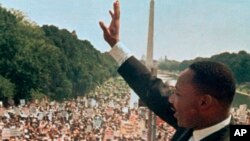The effort to honor civil rights leader Martin Luther King Jr. with a U.S. federal holiday began four days after his assassination on April 4, 1968. However, it took more than 15 years for it to happen.
April 8, 1968 – Four days after King is assassinated, Rep. John Conyers, D-Mich., introduces the first legislation proposing a federal holiday for Martin Luther King Jr.
1973-1979 – Several states enact statewide King holidays, including Illinois, Massachusetts, Connecticut and New Jersey.
Feb. 19, 1979 – After 10 years of petitions from millions of Americans, Washington lawmakers hold an official hearing to discuss the idea. King’s wife, Coretta Scott, testifies before the Senate Judiciary Committee.
November 1979 – Legislation for the holiday is defeated in a floor vote in the U.S. House of Representatives by just 5 votes.
January 1981 – Singer-songwriter Stevie Wonder releases “Happy Birthday,” a song that becomes a rallying cry for the pro-holiday movement.
1982 – Coretta Scott King, along with Stevie Wonder, presents a petition signed by 6 million people to House Speaker Tip O’Neill.
Aug. 27, 1983 – More than 500,000 people attend a 20th Anniversary March on Washington to honor King and the civil rights movement. Speaker after speaker calls for a federal holiday on King’s birthday.
August 1983 – The U.S. House of Representatives passes the King Holiday Bill, 338-90.
Oct. 19, 1983 – The King Holiday Bill passes the Senate, 78-22.
Nov. 3, 1983 – President Ronald Reagan signs the bill into law, declaring the third Monday in January the Martin Luther King Jr. National Holiday.
Jan. 20, 1986 – The first national celebration of the King Holiday takes place.












